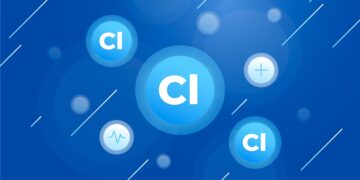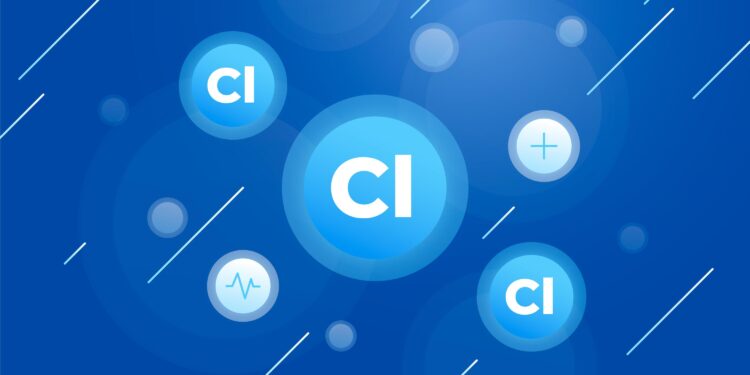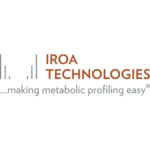In the world of analytical chemistry, the accuracy and precision of results are paramount. One of the challenges that researchers and analysts face is ion suppression—an often overlooked but significant phenomenon that can skew the outcomes of analyses, particularly in mass spectrometry. Ion suppression occurs when co-eluting compounds in a sample matrix interfere with the ionization efficiency of the target analytes, leading to reduced signal intensity and, consequently, incorrect quantitation.
This article aims to provide an in-depth understanding of ion suppression, its causes, its impact on analytical methods, and strategies to mitigate its effects.
The Basics of Ion Suppression
At its core, ion suppression refers to the decrease in the detector’s response to target ions due to the presence of other compounds in the sample. In mass spectrometry (MS), ion suppression is particularly problematic because it hampers the ionization process, leading to reduced sensitivity and inaccurate quantification.
The Mechanism Behind Ion Suppression
Ion suppression typically occurs during the ionization stage in liquid chromatography-mass spectrometry (LC-MS) systems. In electrospray ionization (ESI), for instance, compounds that co-elute with the target analyte compete for ionization. When these co-eluting compounds have higher ionization efficiency, they “suppress” the ionization of the target analyte, reducing its detection.
Causes of Ion Suppression
Several factors contribute to ion suppression, and understanding them is crucial for minimizing its effects:
- Complex Sample Matrices: Biological samples such as plasma, serum, or urine often contain proteins, lipids, and salts that can cause ion suppression. These components compete with the analyte for ionization.
- Co-elution of Compounds: In chromatography, if compounds with similar retention times co-elute, they can interfere with the ionization of the target analyte, leading to suppression.
- Mobile Phase Composition: The composition of the mobile phase in LC-MS can affect the ionization efficiency. For example, highly organic mobile phases can enhance or diminish ionization depending on the analyte and matrix.
- pH and Buffer Salts: The pH and types of buffer salts used during analysis can influence the ionization process, potentially leading to suppression.
The Impact of Ion Suppression on Analytical Results
Ion suppression can have significant consequences for analytical results, especially in quantitative analyses. The reduced ionization of the analyte leads to lower signal intensity, which can be misinterpreted as lower concentrations of the compound in the sample. This can result in:
- Inaccurate Quantitation: Lower signal intensity can cause underestimation of analyte concentrations, leading to skewed results.
- Reduced Sensitivity: Ion suppression lowers the overall sensitivity of the analytical method, making it difficult to detect low-abundance analytes.
- Inconsistent Results: The effect of ion suppression can vary between different samples or even within the same sample batch, leading to inconsistent data.
Methods for Detecting Ion Suppression
Identifying ion suppression is essential for maintaining the integrity of analytical data. Several methods can be used to detect ion suppression in mass spectrometry:
- Post-Column Infusion: This involves continuously infusing a standard solution of the analyte into the MS system while the sample is analyzed. If ion suppression occurs, a decrease in signal will be observed when the co-eluting compounds enter the ion source.
- Matrix-Matched Calibration Curves: By preparing calibration standards in the same matrix as the sample, you can observe any ion suppression effects and adjust the quantitation accordingly.
- Internal Standards: The use of isotope-labeled internal standards can help account for ion suppression, as the internal standard will experience the same suppression as the analyte.
Strategies for Minimizing Ion Suppression
While ion suppression is a common challenge, several strategies can help mitigate its effects and improve the accuracy of your analyses:
- Sample Clean-Up Techniques:
- Solid-Phase Extraction (SPE): SPE can help remove interfering compounds from the sample matrix, reducing the likelihood of ion suppression.
- Protein Precipitation: Removing proteins from biological samples can significantly reduce ion suppression, as proteins are common culprits.
- Optimized Chromatographic Separation: Improving the separation of analytes from interfering compounds can help reduce co-elution and subsequent ion suppression. Adjusting the mobile phase or modifying gradient elution may enhance separation.
- Alternative Ionization Techniques: In some cases, switching to a different ionization technique such as Atmospheric Pressure Chemical Ionization (APCI) can reduce the effects of ion suppression compared to ESI.
- Dilution of Samples: Diluting the sample can sometimes alleviate ion suppression by reducing the concentration of matrix components that interfere with ionization.
Ion Suppression in Various Analytical Applications
Ion suppression is not limited to a specific field of analysis; it is a concern across various industries, including pharmaceuticals, environmental testing, and clinical diagnostics. Let’s explore some key areas where ion suppression plays a critical role.
1. Pharmaceutical Industry
In drug discovery and pharmacokinetics, accurate quantification of compounds is essential. Ion suppression can result in underestimation of drug concentrations in biological samples, leading to incorrect pharmacokinetic profiles.
2. Environmental Testing
In environmental analysis, especially when dealing with complex samples like soil or wastewater, ion suppression can hinder the detection of trace contaminants. This is particularly concerning when trying to detect pollutants at low concentrations.
3. Clinical Diagnostics
Clinical laboratories often deal with complex biological matrices that are prone to ion suppression. Inaccurate quantitation due to suppression can have serious implications for patient diagnosis and treatment.
Overcoming Ion Suppression: Best Practices for Researchers
Researchers can adopt several best practices to overcome ion suppression in their analytical workflows:
- Regularly Monitor Suppression: Use post-column infusion or matrix-matched standards to continuously monitor the impact of ion suppression during analysis.
- Implement Rigorous Sample Preparation: Employ thorough sample clean-up techniques to remove interfering compounds and minimize matrix effects.
- Choose the Right Ionization Technique: Assess whether ESI or APCI is more suitable for your analyte and matrix to reduce suppression.
- Report Suppression Effects: When publishing data, always report any potential ion suppression observed during analysis to maintain transparency and ensure reproducibility.
Conclusion: Addressing Ion Suppression in Analytical Chemistry
Ion suppression is a critical challenge in analytical chemistry, particularly in mass spectrometry-based methods. Its ability to skew results through reduced signal intensity can significantly impact the accuracy and reliability of quantitative analyses. However, with proper detection, mitigation strategies, and best practices, researchers can minimize the effects of ion suppression and ensure more accurate and reproducible results.
If you work with complex matrices or sensitive detection methods, understanding and addressing ion suppression is essential for high-quality data. By employing robust techniques like sample clean-up, optimized chromatographic separation, and internal standards, you can overcome the challenges posed by ion suppression and improve the precision of your analytical methods.
IROA Technologies is simplifying the metabolomics research requirements with its scientific technologies. It's cost-effective in nature and is used by many customers for metabolomics research. We offer various types of services like metabolite standards, amino acid library, organic acid metabolites, ion suppression, and many more.








































